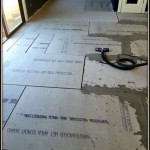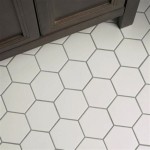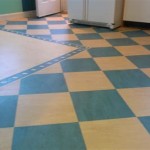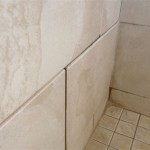Subway Tiles: The Perfect Choice For Any Home Design
Subway tiles have transcended mere utilitarian function to become a defining element of interior design. Originally conceived for the New York City subway system in the early 20th century, these rectangular tiles have steadily evolved, demonstrating remarkable adaptability across diverse architectural styles and design sensibilities. Their enduring appeal lies in their inherent simplicity, versatility, and capacity to elevate any space with a touch of understated elegance.
The enduring popularity of subway tiles is not simply a passing trend. It is rooted in a confluence of factors, including their historical significance, their clean and minimalist aesthetic, and their practicality in a variety of applications. From kitchens and bathrooms to entryways and feature walls, subway tiles offer a timeless design solution that can be customized to reflect individual preferences and complement existing décor.
The purpose of this article is to explore the multifaceted benefits of subway tiles, examining their design versatility, practical advantages, and the considerations involved in their selection and installation. By understanding the key characteristics that make subway tiles a compelling choice, homeowners and designers can make informed decisions to enhance the aesthetic appeal and functionality of any home.
The Historical Significance and Evolution of Subway Tiles
The subway tile’s origin is directly linked to the burgeoning New York City subway system. As the city embarked on its ambitious underground transportation project in the early 1900s, architects sought a durable, hygienic, and visually appealing material to line the tunnels. The solution emerged in the form of the rectangular, glazed ceramic tile, designed by George C. Heins and Christopher Grant La Farge. This innovation not only met the practical requirements but also contributed to a sense of cleanliness and order within the bustling subway stations.
The original subway tiles were typically white, offering maximum reflectivity and ease of maintenance. The glossy surface repelled dirt and grime, while the simple rectangular shape facilitated efficient installation and replacement. Over time, the subway tile design evolved, incorporating subtle variations in color, size, and texture. Beveled edges, crackle finishes, and bolder color palettes emerged, catering to evolving design trends and individual preferences. The fundamental rectangular shape, however, remained a constant, preserving the tile's iconic association with the subway system.
Throughout the 20th century, subway tiles steadily gained popularity in residential and commercial settings. Their clean lines and minimalist aesthetic made them a natural choice for modern and contemporary designs. As trends shifted and design preferences evolved, subway tiles demonstrated remarkable adaptability, seamlessly integrating into a wide range of styles, from classic and traditional to industrial and bohemian. This inherent versatility has solidified their status as a timeless design element, capable of enhancing any space with a touch of understated sophistication.
Design Versatility and Aesthetic Appeal
One of the most compelling aspects of subway tiles is their exceptional design versatility. Their simple rectangular shape provides a blank canvas for creative expression, allowing for a wide range of patterns, layouts, and color combinations. The standard horizontal offset pattern, known as the running bond, is a classic choice that creates a sense of visual rhythm and continuity. However, numerous alternative patterns, such as vertical stacking, herringbone, and stacked bond, offer unique visual textures and spatial effects.
The color of subway tiles can significantly impact the overall aesthetic of a space. White subway tiles remain a popular choice for their clean, bright, and timeless appeal. They create a sense of spaciousness and can be easily paired with any color scheme. However, a wide array of colored subway tiles is available, ranging from subtle neutrals to bold and vibrant hues. These colors can be used to create focal points, define spaces, and express individual style.
Furthermore, the grout color plays a crucial role in the overall design. Using a contrasting grout color can accentuate the individual tiles and create a graphic, eye-catching effect. Conversely, using a grout color that closely matches the tile color can create a more seamless and subtle look. This interplay between tile and grout offers endless possibilities for customization and allows designers to tailor the look to specific design objectives. The choice of tile finish, whether glossy, matte, or textured, can further enhance the design, adding depth and visual interest to the surface.
The versatility extends beyond color and pattern. Subway tiles can be used in a variety of applications, from kitchen backsplashes and bathroom walls to shower enclosures and fireplace surrounds. Their ability to adapt to different scales and surfaces makes them a valuable tool for interior designers and homeowners alike. Whether used as a subtle backdrop or a bold statement piece, subway tiles can transform any space with their timeless elegance and understated charm.
Practical Advantages and Installation Considerations
Beyond their aesthetic appeal, subway tiles offer a number of practical advantages that contribute to their enduring popularity. Their glazed surface is highly resistant to water, stains, and scratches, making them an ideal choice for high-traffic areas and moisture-prone environments. They are also easy to clean and maintain, requiring only simple wiping with a damp cloth to remove dirt and grime. This low-maintenance characteristic makes them a practical and hygienic option for kitchens, bathrooms, and other areas that require frequent cleaning.
Subway tiles are also known for their durability and longevity. Properly installed, they can last for decades without showing signs of wear or deterioration. Their resistance to fading and discoloration ensures that they will maintain their original appearance over time. This long-term durability makes them a cost-effective investment, as they require minimal replacement or repair.
The installation of subway tiles is a relatively straightforward process, but it requires careful planning and attention to detail. Proper surface preparation is essential to ensure a strong and lasting bond between the tiles and the substrate. The surface must be clean, dry, and level before applying the adhesive. A thin-set mortar is typically used to adhere the tiles to the wall or floor. It is important to use the correct type of mortar for the specific type of tile and substrate.
Precise tile placement is crucial to achieving a professional finish. Using spacers between the tiles ensures uniform grout lines and a consistent appearance. After the mortar has dried, the grout is applied to fill the gaps between the tiles. The excess grout is then wiped away with a damp sponge, leaving a clean and even surface. Sealing the grout helps to protect it from stains and moisture and extends its lifespan.
While DIY installation is possible, it is often recommended to hire a professional tile installer for optimal results. Experienced installers have the necessary tools, skills, and knowledge to ensure that the tiles are installed correctly and that the finished product is both aesthetically pleasing and structurally sound. Proper installation not only enhances the appearance of the tiles but also protects the underlying substrate from water damage and other potential problems.
In summary, subway tiles present a compelling combination of aesthetic appeal and practical functionality. Their historical significance, design versatility, and ease of maintenance make them an ideal choice for a wide range of applications. While installation requires careful planning and execution, the resulting benefits in terms of durability, longevity, and visual enhancement make subway tiles a worthwhile investment for any home.

Bathroom Subway Tile Ideas 2024 Stone Depot

Timeless Appeal Of White Subway Tiles

23 Ways To Decorate With Subway Tile Architectural Digest

33 Subway Tile Backsplashes Stylish Ideas For Kitchens

Subway Tile Is It In Or Out

7 Takes On A Dreamy White Subway Tile Bathroom Sweeten Com
:strip_icc()/149227403_1128522247578130_6231868015445811908_n-8c71c052c7d843b69a24ecc60eb5c213.jpg?strip=all)
21 Subway Tile Backsplash Ideas

Timeless Appeal Of White Subway Tiles

Subway Tiles For Kitchen Backsplash More The Tile

24 Best Subway Tile Bathroom Ideas How To Use 2024
Related Posts








